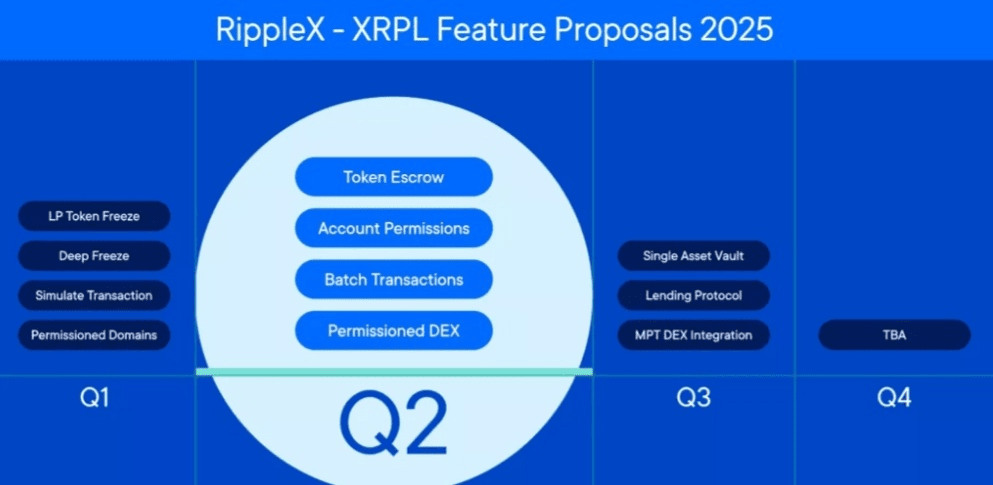Ripple talked about the formation of decentralized finance infrastructure of institutional level based on the XRP Ledger (XRPL).
The foundation of the platform is its own decentralized exchange (DEX) on XRPL, into which existing and developing solutions are being integrated.
One of the options became an automatic market maker (AMM) based on the XLS-30 standard. The mechanism is directly integrated with the centralized order book on DEX. One of the features is the ability to revoke funds in case of a threat of losing access to the account or malicious actions. The feature is disabled by default and does not apply to the XRP token.
Among the main use cases for AMM, developers mentioned:
providing institutional liquidity;
tokenized trading of RWA;
arbitrage and cross-chain swaps.
After the implementation of XLS-30, the ability to create and manage decentralized identifiers (DID) appeared on XRPL. The feature provides:
comply with KYC/AML principles while ensuring confidentiality;
installation and access segregation by permission.
XRPL also integrates its own oracles with a built-in mechanism for transferring off-chain data into the protocol. Currently, price feeds from both cryptocurrency and traditional markets are provided by third-party providers like Band Protocol and DIA.
«This is important for institutional investors, considering that much of the required data is still in outdated Web2 systems,» emphasized Ripple.
In the future, developers plan to:
expand the functionality of DID with options for Permissioned Domains and Permissioned DEX;
implement the concept of 'multi-purpose tokens' (MPT);
launch a lending protocol for institutions on XRPL.

Recall that in January, Morgan Creek CEO Mark Yusko pointed to 'talks' about the integration of XRP into the US banking system.